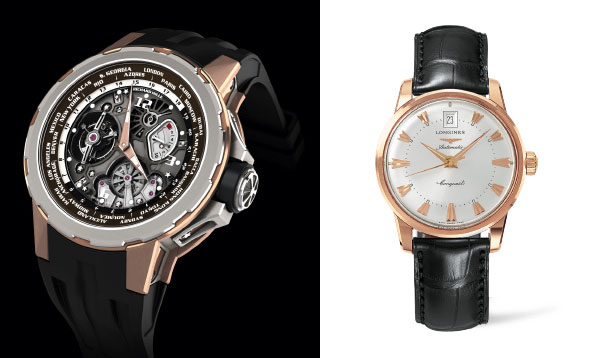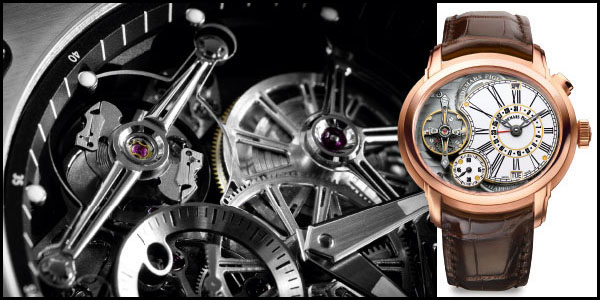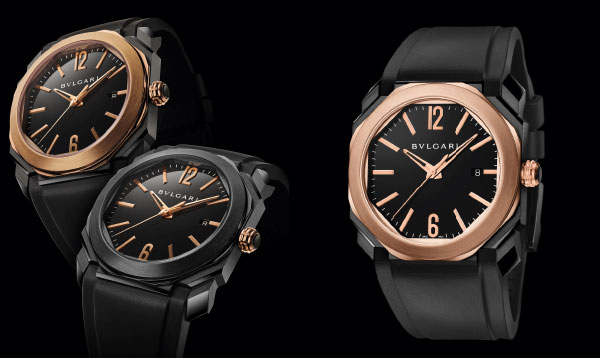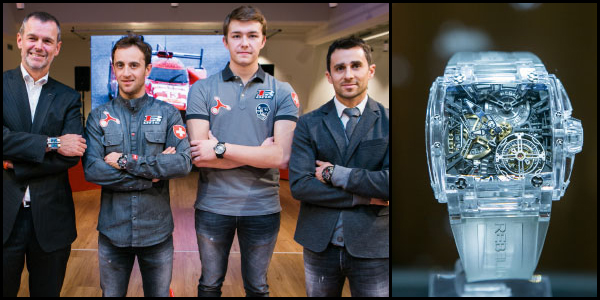
Richard Mille RM 58-01 : bezel-activated worldtime function and a multi-material case comprising a large number of components.
It’s about far more than just metal. The price of a case naturally depends on its material, but also its shape, its construction and its brilliance. When the movement and dial are simple, the price of the case material determines that of the watch, since its cost plays a major role in the economic equation. It is not however always the predominant factor. Longines has for example made a specialty of producing smaller, slimmer and lighter cases, yet without conveying an image of a lightly-made watch. Conversely, other more high-end brands continue to offer heavy, sturdy cases because their clients demand them. Some people still believe you should be able to feel the price of a watch on the wrist even with your eyes shut…
Light but tough
The ultra-technical trend has brought to the fore light metals that are inexpensive but all the more difficult to machine. Titanium in particular is so tough and so resistant to abrasion (and thus to polishing) that its machining is a discipline in its own right. The same goes for ultra-hard materials. Ceramic contracts when heated, so its retraction must be carefully calculated to ensure the desired result when it emerges from the kiln. It must then be drilled without breaking it, a definite weak spot. Machining a transparent sapphire case such as those offered by Richard Mille, Rebellion or Cecil Purnell is incredibly expensive because it literally takes thousands of hours to produce them. Carbon fiber cases are not only pricey in terms of the raw material, but also call for considerable manpower. All these technologies call for new equipment and skills that are still under development, and are used for small series of exclusive watches. Scale economies are thus not an option.

Bvlgari Octo : 110 facets spread over 10 levels and forming a single whole : one of the most complex cases on the market.
Rolex Sky-Dweller : the Ring Command function selector that guides the setting of a watch is hidden inside the bezel.
Transformations
The material is only the start of the process of case production. The volume in question may be a simple disk-like shape or as complex as an abstract sculpture. The sophistication of this geometry gives rise to a series of multiple production phases that can reach unbelievable proportions. A simple case is composed of a back, bezel, middle and lugs. Each of these parts may feature shapes ranging from basic, with a straight or rounded cross-section, to spiral or domed, concave or convex, hollowed or solid. The number of its components rises steeply in step with the sophistication of the functions or simply of the design. The further one departs from the fundamental straight line or circle, the higher machining times climb and with them, the price.
The same goes for drilling. One such operation to make space for the winding stem is nothing like what needs to be done on a perpetual calendar chronograph that requires seven smooth holes, drilled with the nearest micron-level precision. Not to mention a minute repeater case that stems from lengthy development studies. Generally speaking, cases representing an active interface between the inside and outside call for sophisticated technical developments. The RM 58-01 by Richard Mille is for example controlled via its bezel, which guides the adjustment of its worldtime function. The Ring Command system that Rolex has introduced on the Sky-Dweller is a function selector housed in the bezel of this incredibly complex model.

DeBethune Dream Watch 5 : an exquisitely curved titanium case mirror-polished by hand and issued in an ultra-limited series, thus combining all the ingredients of a correspondingly high cost.
Rebellion 540 Magnum Tourbillon Sapphire : with its sapphire case featuring compound curves.
Urwerk UR210 : complex volumes, domed surfaces and multiple corners heighten the difficulty of producing such a case, as reflected in the price.
Mirror
Even once machined and assembled, the case is a rough object. It needs to given a polished or matt finish, or both. Treating its surfaces is not easily done through automated processes. While a few stages such as sandblasting or satin-brushing may be performed by machines, the best results are always achieved by the extraordinary coordination between the human hand and eye. Beneath the burnishing tools wielded by the polisher, gold, platinum, steel and sometimes even titanium gradually acquire a mirror-like shine. Thus, just as with other watch components, the cost of a case is above all calculated in hours.






